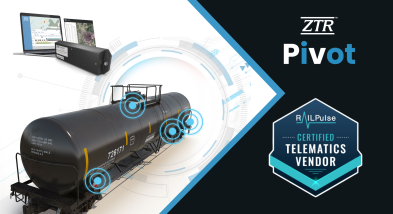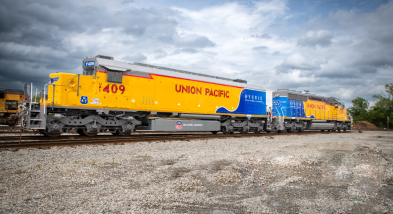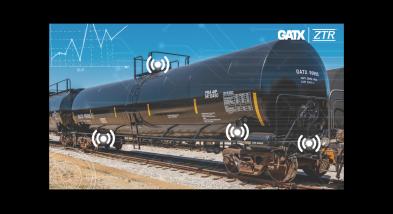Frequently Asked Questions
Get answers to common questions here. Your feedback is important to us. Contact us if you have a suggestion or want to share your own experience.
All standard service packages include location services, mapping, geofencing, breadcrumbing, alert/fault management and notifications. Depending on the package you choose, you can also get run hours, battery voltage reporting, analytics, engine operating parameters, business system integration, and more.
Contact marketing@ztr.com to give us details about how ZTR helped solve a problem or served a need. We'd be happy to share your story!
Often these terms are used interchangeably, but simply put, telematics refers to the remote transmission of information using electrical engineering and computer science technology. The internet of things or IoT, refers to the overall network, the software, and sensors that work together to connect physical objects to each other and business systems to exchange data.
Locomotive batteries and supercapacitors are two energy storage devices with distinct characteristics and applications. Locomotive batteries are typically lead-acid batteries designed to deliver high currents and store a large amount of energy, making them ideal for powering machinery. However, they are relatively heavy, have a limited lifespan, and can take a long time to recharge.
Supercapacitors, such as ZTRs KickStart Starting Assist, use supercapacitors, sometimes called ultracapacitors, which can charge and discharge quickly and efficiently to provide reliable and consistent starting power to locomotives. Supercapacitors have several advantages over traditional batteries, including high power density, long lifespan and the ability to reduce the number of locomotives that experience dead-won't-start (DWS) events.
Farads is a unit of measurement used to describe the capacitance of a supercapacitor, and the higher the capacitance, the more energy the supercapacitor can store and discharge quickly. The capacitance of a supercapacitor refers to its ability to store electric charge. Supercapacitors have higher capacitance values than traditional capacitors, which allows them to store more energy and discharge more quickly, making them ideal for locomotive starting.
Estimates on the cost of a dead-won't-start event range from $2,000 to $20,000 or more depending on several factors such as the train's location, the type of freight being transported, the length of the delay, and the impact on other trains on the same track.
DWS events can cause significant disruptions to the rail network, leading to delays and cancellations. The cost of these delays can be substantial, especially if they affect passenger trains or if the train is carrying time-sensitive cargo.
In addition to the immediate costs of the delay, there can also be long-term impacts on the railroad's reputation and future business. As a result, shippers may choose alternative transportation options if they experience frequent delays or disruptions on a rail line.
It is challenging to estimate the exact cost of a dead-won't-start event on a railroad as it can vary widely depending on the circumstances. However, such events can significantly impact the railroad's operations and finances.
Reducing fuel usage is one of the easiest ways to lower locomotive emissions. Locomotive engine idling is one of the most significant contributors to unnecessary fuel usage. Ensuring the Automatic Engine Start Stop System (AESS) on a locomotive works optimally is a great way to reduce fuel usage and emissions. In addition, adding a supercapacitor starting assist, such as KickStart, allows the AESS to stay shut down longer, further reducing idling time and cutting emissions. It is estimated that a KickStart saves $4000 or more in fuel costs and over 10 tonnes of CO2 per year per locomotive. Ensuring your AESS works effectively can lead to significant cost savings for the railroad with added environmental benefits.
The amount of fuel a locomotive uses, and the number of emissions it emits are closely connected. When a locomotive burns fuel, it produces various pollutants, including carbon dioxide (CO2), nitrogen oxides (NOx), particulate matter (PM), and sulphur oxides (SOx). The amount of each pollutant produced is directly related to the fuel burned. For example, every gallon of fuel consumed creates roughly 10,180 grams of CO2.
The more fuel a locomotive burns, the more emissions it produces. This is why reducing fuel consumption is one of the most effective ways to reduce emissions from locomotives. Using technologies like AESS (Automatic Engine Start-Stop) systems coupled with supercapacitors, such as the KickStart Starting Assist, locomotives can reduce the fuel they burn, reducing their emissions.
Recent News

ZTR Achieves RailPulse Certification, Strengthening Leadership in Railcar Telematics

Union Pacific Testing Hybrid Locomotive Built With ZTR
